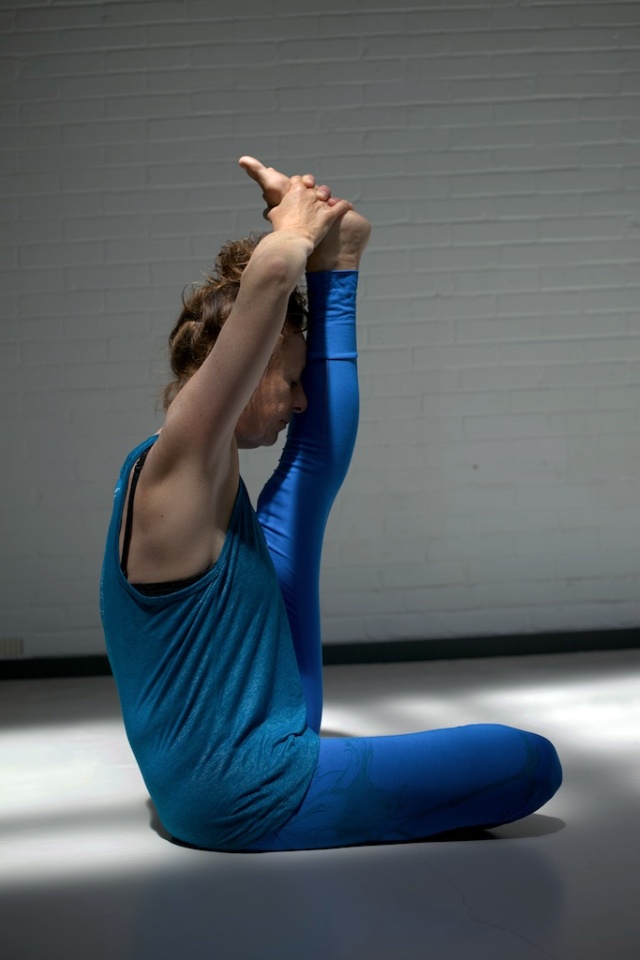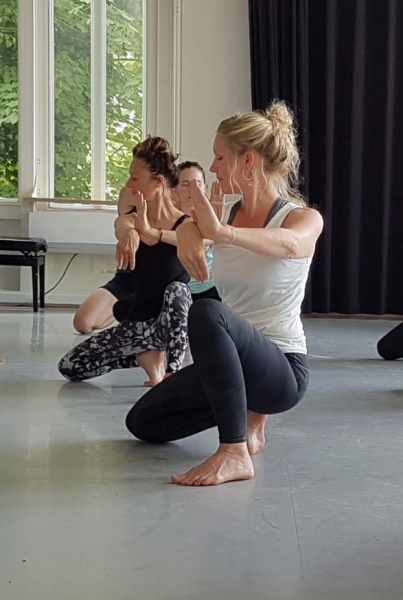Shadow Yoga
Shadow yoga starts the process of personal development by the practices of the tree perulde forms.
These forms are created to develop right mindset, to adjust physical disorders, to develop the right ritme of breath and to understand the basic principles of the Hatha Yoga system.
This way prana (life force) and agni (digesting fire) will function well and personal transformations on physical, emotional, mental and spiritual level can take place.
The preludes teach the Sadhaka (student) how to connect movement and breath and to become aware of the inner circuits like the chakra system, the nadi’s (channels that carry the prana/ life force) and the vayu’s (inner movement of wind, which can move the inner energy).
This way the physical and mental body will recover and the individual will experience it’s natural state of being. Flexibility and strength will return. The mind will be calm.
The three prelude forms are:
- Balakrama (stepping in to strength)
- Chaya Yoddha Sancalanam (churning the shadow warrior)
- Kartikkeya mandala (Garland of light)
The next forms are N’rita Sadana (Shiva’s pure dance), Asana (poses) and Pranayama (control of the inner breath).
In class we also work with different mantra’s (to calm down the mind) and mudra’s (gestures).
Nrtta Sādhanā
This form, devoid of any gymnastic or theatrical embellishments, is developed to help the sadhaka (aspirant) to rediscover the natural rhythmic currents hidden within the body.
This form is there to teach the student to move natural and elegant, without any imposition of the mind.
The postures in the N’rrita are called Karana’s. Out the of 108 karana’s only 36 are used for the purposes of personal development (yoga).
A karana consists of 3 parts
- Bodily postures
- Hand movements
- Movements of the feet
The movements from the N’rrita are refined by nature. Therefor it is important to first study the preparatory work (the 3 preludes)/ These preparatory forms cultivate coordination of body and limbs and create ritme (good breathing) and focus.
The four forms of N’ritta are:
- Ananda Tandavan (eternal dance of bliss)
- Ashta Makrikas (eight mother palms)
- Lasya (Kali’s creative dance or long form)
- Shiva Tandavan (wild dance of Shiva)
Most of the asana’s used today in contemporary yoga schools are adaptations of the standing and squatting karanas. The most important difference is that in the original practice the placements of the legs was achieved through the energy of the legs, as nowadays the placement of the legs is manipulated with the hands to achieve the same shape.
Nicolet Montanus
The Nrtta consists of 3 forms. Since 2008 Nicolet Montanus has been apprenticed to her teachers Sundernath (Shandor Remete) and Emma Balnaves to master and understand these forms.
Recently Nicolet has been giving workshops in the first form: Ashta Matrika’s – the mother eight palms.
Living from your own nature
“Hatha Yoga is the basis of all Yoga forms. “Ha” is the sun and “Tha” is the moon. Through Yoga you balance these energies with each other.”
Nicolet Montanus
From: Interview in het Haarlems Dagblad, 18 februari 2017: ‘Door de schaduw naar je pure zelf’


